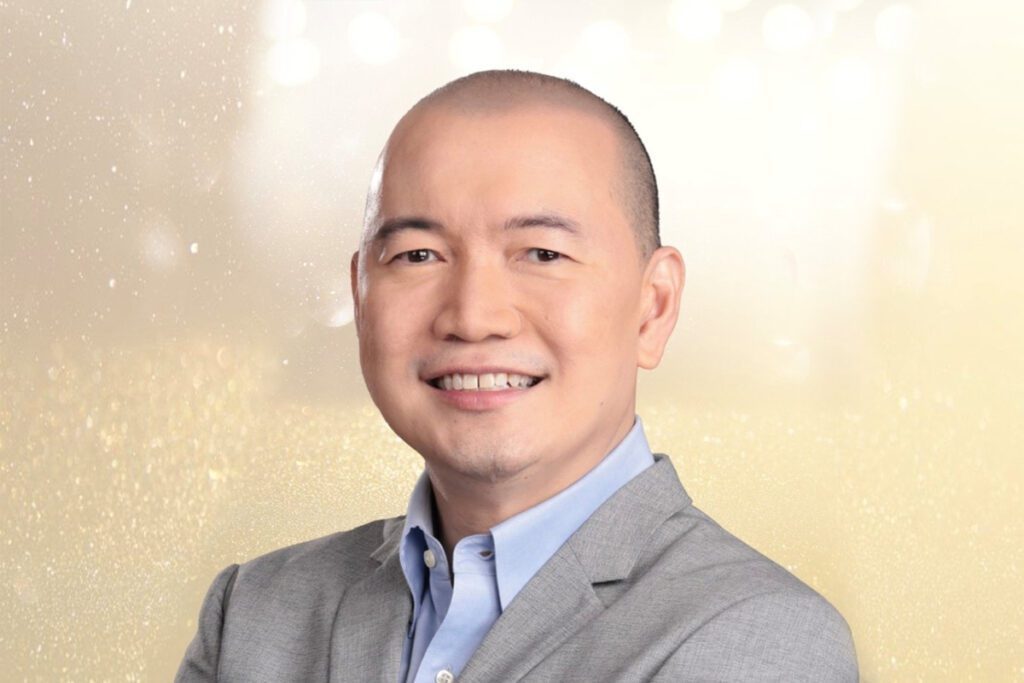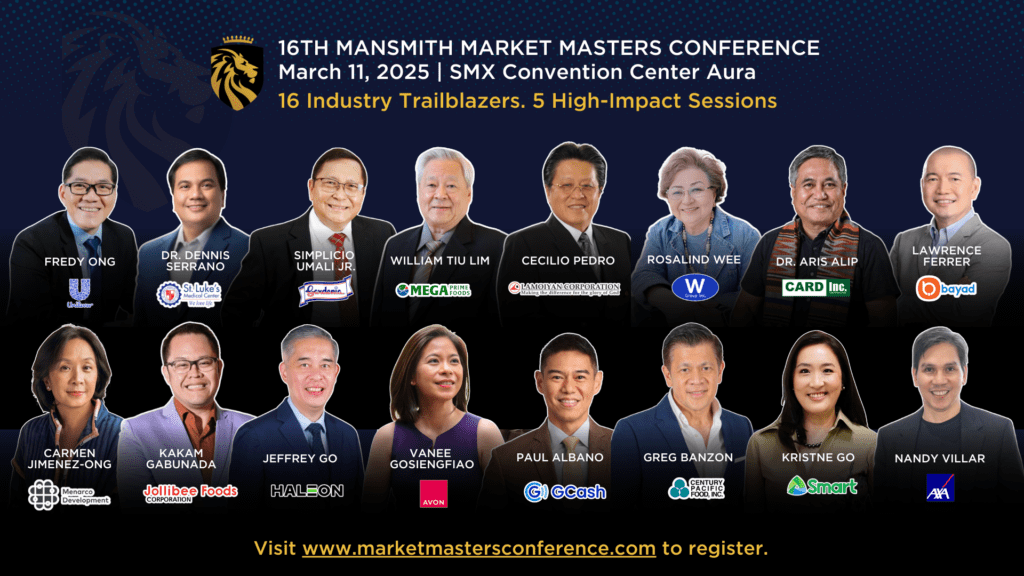
CIS Bayad Center, Inc. is one of the most prominent and extensive omnichannel payment platform in the Philippines. It is the pioneer and market leader in the outsourced bills payment collection industry, with the largest biller network. They are more popularly known as Bayad, a subsidiary of the Manila Electric Company (MERALCO) and a member of the MVP Group of Companies. With over 13 million transactions passing through its system every month and a 59% market penetration rate, Bayad has established itself as one of the most trusted brands in bills payment, powering more than 400,000 payment touchpoints, as well as one of the leading web and mobile applications in the country.
Lawrence Ferrer, President and CEO of Bayad, and a payment expert, who recently won the Master Innovator award at the 4th Mansmith Innovation Awards, shares with us the importance of innovation in a company’s operations
Q1: In 2001, Smart Money was launched three years ahead of the competition. You were heavily involved in the formulation and launch of the first electronic load (eload) services in the Philippines. What critical lessons did you learn from the Smart Money initiative?
A1: My career began in banking during the late-90s, but it was my time at Smart Communications in 2000 that truly defined my professional journey. I was privileged to be part of the pioneering team that developed the world’s first mobile wallet. This groundbreaking innovation garnered global recognition and laid the foundation for the mobile payment landscape we see today. It was an exciting era (Telco-Wars) marked by fierce competition and rapid technological advancements.
If I were to highlight a single achievement, it would undoubtedly be the electronic load product (Smart eload). Its launch sent shockwaves through the market, propelling Smart significantly ahead of the competition. As the product lead, I was tasked with developing a revolutionary distribution model to replace the inefficient physical load cards. The challenge was clear: reduce distribution costs by half, expand our reach, and maintain average revenue per user (ARPU).
To expedite development, we leveraged our existing Smart Money platform and integrated it with our Prepaid System to introduce an over-the-air top-up service. By utilizing internal resources, we significantly accelerated the process compared to outsourcing or exploring external solutions. On the distribution side, we zeroed in on the “Sari-Sari Stores” retailers, given its pervasiveness and accessibility to our customer base. To incentivize these retailers, we reallocated the customer bonus load as a commission, with management approval. Finally, persuading customers to adopt the new load model without compromising revenue was a critical challenge. By deeply understanding the Sari-Sari Store market, I introduced smaller, more affordable airtime denominations, shifting from a monthly Php 300 to a Php 30 three-day option (Sachet “Tingi-Tingi” Model). This strategy not only protected our average revenue per user but also expanded our customer base by catering to those with limited budgets.
This phase of my career instilled in me the importance of deep customer understanding, identifying their challenges, and leveraging your current technology as a tool to deliver relevant solutions.
Q2: The channel of Bayad has, over the years, evolved from being available in multiple Meralco branches to banks, to opening your own retail branches, then heavily into the franchising model where Bayad has been recognized as an outstanding franchisor, and eventually going the full digital route, creating a totally different business model for the company. Today, retail stores are just a minority of your entire business. What will happen to your franchise store concept? And why should a store franchisee continue to be one?
A2: Bayad’s early success was deeply intertwined with the growth of Filipino small and medium enterprises who embraced our business model. As the market evolved and digital payments gained prominence, we anticipated these shifts and proactively invested in building our digital infrastructure. This included developing proprietary channels and integrating with external platforms like mobile wallets, banks, and remittance services.
To ensure our franchise partners remained competitive in this new landscape, we implemented two key strategies. First, we modernized our operations by replacing our legacy system with a real-time platform, enhancing efficiency and transaction success. Second, we expanded our service offerings beyond bill payments to include financial services like airtime loading, cash management, and insurance. This diversification not only drove increased foot traffic to our partner stores but also solidified the enduring relevance of physical touchpoints in the evolving payments ecosystem.
Q3: How did you know that the digital transformation you did was the right thing to do? Did you have a Plan B in case your assumptions failed?
A3: To navigate the complexities of digital transformation successfully, we prioritized data-driven insights and a deep understanding of customer needs. Our plans were carefully constructed around enhancing the customer experience, taking into account both our customers’ and partners’ perspectives. A thorough cost-benefit analysis was essential in determining the viability of each initiative, ensuring that the potential return justified the investment and timeline.
Recognizing the inherent risks in any transformation, we established robust contingency plans, including rollback options, to safeguard against unforeseen challenges.
Q4: How did you handle situations where a decision had to be made and key constituents might not like the potential outcome?
A4: Reality is that despite careful planning, many outcomes often fall short of expectations. I experienced it multiple times such as product/service rollbacks and marketing promotions that did not generate enough incremental volume.
In these situations, it is important the team establish clear communication lines. For example, in product rollouts/cutovers, the core team is accessible through group chats, including decision makers. If the production is compromised due to bugs or errors, they cascade and action steps are taken immediately.
Lastly, at times we make decisions that are not popular but needed. In Bayad, we create Steering Committees, composed key executives, that forms the project’s governing body, providing high-level oversight and support. They make key decisions as a group. With this practice, it mitigates arguments and provide faster turnaround time.
Q5: With a significant business model shift, how did you motivate your team to accept the change?
A5: As their CEO, it is my responsibility to motivate, inspire and rally the organization particularly in major changes we face. I generally follow these five steps to keep the team united and ready for challenges.
First, Communication. Every member of the team has to be made aware of the plan and the reason why we are doing this. To ensure they hear it straight from me, I hold regular meetings from Mancoms, coffee “Kapihans” sessions with staff and regular townhalls . I believe in open communication and accessibility. My door is always open to any member of the organization.
Second, co-creation. As you’re aware, Bayad has undergone a transformation to become a comprehensive fintech company. This strategic shift has accelerated our pace of product innovation and launch. One of the things, I instituted is a weekly Project Steerco meetings. This allowed me to hear from each team about their projects and what they need. More importantly, I get a good grasp on the challenges on ground and to remind them that “no one has a monopoly of good ideas”. We promote supportive space where individuals can express their thoughts and ideas freely.
Third, I believe in fostering a culture of co-ownership. Having spent most of my career in product development, I understand the intrinsic rewards of creating something from scratch. I’m committed to empowering my team to feel the same sense of fulfillment and pride in their work.
Fourth, compensation (& recognition) By acknowledging and appreciating their achievements, we can significantly impact employee morale, motivation, and overall engagement. As a practice, we throw mini-celebrations for certain group achievements, on top of performance incentives.
Finally, consistency is paramount. We prioritize ongoing employee support and development. To ensure this commitment, I regularly remind our executive team to stay attuned to their teams’ needs and escalate critical issues to the management committee for timely resolution. At the end of the day, our employees are our most valuable asset and are the driving force behind innovation, customer satisfaction, and overall business growth.
Q6: What has been the result of the innovation initiatives you have implemented so far? Given another chance, what would you have changed?
A6: Having dedicated over 20 years to this field, I’ve had the privilege of witnessing firsthand the transformative power of innovation. From small-scale breakthroughs to large-scale impacts affecting ten of millions Filipinos, from Smart Money, Electronic Load, , Pasaload, Smart Padala, PayMaya UBP’s Quick Loans and Bayad’s Real Time Payment Processing. While I do have a few regrets, such as not having some of these innovations patented, I still count myself fortunate to be part of this incredible journey and having made a difference.
***
Josiah Go is the Conference Chair of the 16th Mansmith Market Masters Conference happening on March 11, 2025 at SMX, SM Aura BGC. Click here to learn more: www.marketmastersconference.com

.


